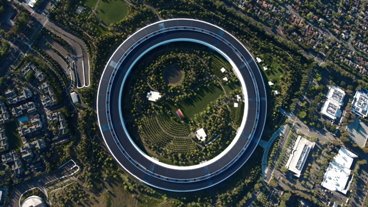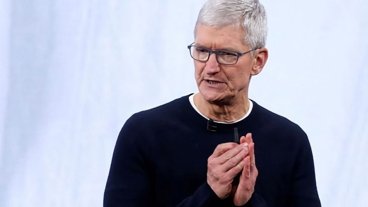Supply chain channel check stories hurting skittish investors, enriching Apple's shareholders
It might sound bad for investors long on Apple that the company's stock price has dipped so dramatically once again on new reports that claim supply chain rumors are somehow, suddenly a good way to forecast iPhone sales after being completely wrong year after year. But that's wrong, and here's why.
In reality, shareholders who don't panic actually benefit from the wild swings of transparent stock price manipulation because Apple is buying back incredible billions worth of its own shares, regardless of the price. The lower those shares reach, obviously, the better the return for the finite cash Apple has left to spend on buybacks this year.
An unquestionable truth that nobody talks about
When Apple's fiscal Q1 2019 officially began in October, there were a few things that were well known. Apple was going to report industry-leading revenues and earnings which it did November 1, crowds globally were going to vote with their dollars to once again make Apple the largest vendor of premium smartphones on earth by a vast margin, and competitors were going to meekly push out look-alike premium-priced devices that weren't going to sell in significant quantities in the commodity Android market where phones have an Average Selling Price of around $200.
We could also count on the fact that Japan's Nikkei was going to float out a story about how it feared that the latest iPhones must not be selling well because of rumored production cuts from some supplier. Every single time it has done this before it has been completely wrong.
We also had a pretty good idea that tech reporters of all shapes and sizes would fall for it completely and report it without context, and that skittish investors would sell off their holdings in a panic, temporarily driving down the going share price.
One more thing
This seems like bad news for Apple. But those of us who read the company's financial reports also knew one more thing: that Apple has an incredibly massive pile of cash of around $71 billion that it has already lined up to repurchase its shares. And, it keeps buying back its shares in huge volumes, apparently without regard for the current price.
The clear and obvious conclusion no matter what motive analysts and clickbait algorithms have for fomenting panic in Apple's share price is the only end result for long-term investors is that Apple will be buying back its shares at a mind-blowing, unbelievable discount, rather than at prices that are simply just "very low" for a company with its track record.
Apple's P/E ratio is currently 15.7, which suggests that investors don't expect it to grow at all, even though it actually is growing, it continues to perform extremely well, and it's crushing its competitors in one market after the next.
There's a lot of divergent opinions among things related to Apple, from the price of its dongles, to the true utility of USB-C, to the value of the Touch Bar, and so much more. But there's simply no controversy that Apple's $71 billion will be taking from dumb investors and handing it to smart investors at a faster pace when the share price dips down into radical panic levels, as it has over the last two weeks— dropping 16 percent as the most threadbare, uninformed, blatantly and transparently stupid rumors emerged like clockwork from Nikkei.
Q4 results for Apple are strong, especially iPhone (and lesser extent iPad). iPhone X hit numbers at the high end of the industry range.
— Ryan Reith (@ryanreith) January 22, 2018
Supply chain channel check derangement syndrome
There are other factors that Apple's most recent stock drop could be attributed to, from unjustified panic about Apple not reporting detailed unit sales in the future, to the idea that Apple issued conservative guidance for the December quarter. But based on the sheer volume of stories rehashing the details of this-or-that supplier "perhaps" portending doom for iPhone sales, this is again an issue of Supply Chain Channel Check Derangement Syndrome.
And the craziest thing about Supply Chain Channel Check Derangement Syndrome is, not that it's so stupid in itself, but that its primary effect is to create the opposite of what Supply Chain Channel Check Derangement Syndrome reporters are claiming it will have. In fact, every crazy reason given for Apple's share price to fall will only really have one real effect, long term — making it cheaper for Apple to inhale more of its stock while consuming less of its $71 billion war chest dedicated to buybacks.
The cheaper Apple's stock gets, the more effective buybacks will be at returning shareholder value to shareholders who hold their shares. This will be the case until Apple spends all of its $71 billion. And Apple currently has $123 billion more to dedicate to future buybacks after it runs through that $71 billion. Plus, the company is generating new billions in cash every quarter.
It looks like Apple will continue to shovel more of its outstanding cash into buybacks, because it simply has too much money to spend, and buying up Apple shares is a far better investment than virtually any other activity on earth, especially when you have existing shareholders who are dumb enough to throw their shares away at a discount every time Nikkei reprints the dumbest story ever written in the tech industry— or in financial reporting of any kind.
In nine months of 2018, Apple bought up $62.9 billion of its own shares
Everyone can agree that $62.9 billion is a lot of money. Apple's buybacks are particularly interesting because they get so little attention. Apple discreetly bought up another $19.4 billion of its own shares off the open market in the quarter ending in September, following a $23.5 billion buyback in its fiscal Q2 and $20 billion spent in June's fiscal Q3.
The buybacks are taking advantage of the continued, vapidly ignorant noise generated by analysts and financial news sites who bizarrely wondered aloud for months when and how Apple might "kill" the most advanced, commercially successful smartphone ever. Now the press is back at it with more pseudo-logic divination regarding Apple's supply chain.
We know Apple is buying up shares this because that's what Apple has been doing and what it has clearly outlined that it will be doing. It's noteworthy that Apple continued to buy up an incredible $19.4 billion in shares in the September quarter despite its share price going up dramatically within the last quarter.
In its 10K, Apple reported that during September quarter, it bought up 26.9 million shares at an average price of $192.50 per share in July. In August, it bought another 36.6 million shares at an average price of $214.07. And in September, it kept buying shares— 29 million— despite the average share price rising to $222.07. Apple shares peaked at $233 in early October.
Guess what Apple is doing now that its share price has plunged below $190 for the first time since July? Hint: it reported that it had $71 billion already allocated to buy back shares.
While efforts to bash Apple's share price are transparently being pushed out by various financial blogs and more conventional media, the greatest beneficiary of irrational dips in Apple's share price is Apple itself— and by extension its shareholders, including the employees it seeks to retain and and the talent it wants to attract with lucrative stock options which are only profoundly valuable when there is potential for the stock to appreciate.
With Apple's shares now forced downward to a P/E ratio of 15.7, it's pretty clear Apple shares have more headroom than shares in companies with astronomically valued stock. Conversely, Apple shares have inherent enterprise value. If Apple were valued like Google or Amazon, its shares would be thousands of dollars each, rather than their current valuation of $186. Those bloated shares would have a lot of room to dive. At a P/E below 16, Apple's shares can't go much lower unless the global economy collapses.
But Apple's shares can go up dramatically, like they did this fall, without even too much blind excitement being involved. In fact, the current analyst consensus points to stock price of $220, where it was comfortably sitting from the end of August into the start of November.
Apple's trillion dollar valuation wasn't crazy
Apple's shares jumped up to record highs in the fall quarter— reaching over $100 billion above that much chatted-about trillion dollar market cap valuation "milestone"— as investors digested the reality that the company is not "trying" to sell iPhones with an Average Selling Price of nearly $800 in a market for $200 commodity smartphones, but is rather servicing a massive installed base of about a billion premium buyers globally who are very unlikely to even look at alternatives to iOS when buying an iPhone.
Of course, Apple isn't "trying" to sell iPhones at all. iPhone buyers are lining up to demand ever-better models— not of "smartphones," but iPhones. Apple's installed base quite incredibly accounts for the majority of smartphones in use the U.S., in Japan, in Austrailia and other affluent countries; not just among well-heeled buyers, but across the entire market. Of course, in regions with incredible wealth disparity— including India and China— Apple only owns the upper tier of the affluent urban middle class. But it still owns that tier: above $500, Apple has very little effective competition.
The fact that most of the West's mainstream population is using iPhones— while various Android producers offer their alternatives on average for one-fifth the price— is pretty incredible. It also explains why the company full of people who know how to make money are investing their proceeds in Apple itself, rather than in commodity smartphone production in China or elsewhere. Despite taking turns passing around the participation trophy for "most smartphones produced," these companies are not making money and are therefore not a good investment.
This all happened before
While the current levels of Apple's buybacks are unprecedented in sheer scale, Apple has previously dropped massive coin on quarterly buybacks after analysts dragged the company's stock down with irrational fear mongering, often rooted in panics built on channel check mumbo-jumbo.
Back in 2015, Apple spent an opportunistic $14 billion on a share grab it initiated after its stock plunged more than 8 percent in January following the report of its highest ever quarterly revenues and operating profits— results that the tech media depicted as "disappointing."
The same thing happened again that summer after Apple announced record earnings in June but market players raised the fearsome prospect of weak sales in China. Apple's shares tanked, enabling the company to opportunistically snatch up another $14 billion of its shares at what was then the lowest point of the year.
In its Fiscal 2016, Apple sped up its buyback rate, spending nearly as much as $96 billion in 2.5 years as it spent $104 billion across its initial four fiscal year plan of stock buybacks. The company has since allocated another $100 billion in stock buybacks, of which it has already spent $29 billion.
Apple's biggest acquisition yet
Apple began buying back shares in 2012, paying market prices for its stock and then destroying those shares. That process makes the remaining shares in the company more valuable, effectively returning the value paid to shareholders. This benefits outside investors in the company, as well as its employees who hold shares. It also enables Apple to recruit talent because it can offer valuable stock options. Buying back shares is effectively an investment in the company itself.
Since 2012, Apple has spent a total of $239 billion in share buybacks. Across 2016 and 2017, it spent between $6 billion and $10.1 billion per quarter on both open market and Accelerated Share Repurchase programs to buy its back stock. However, since the start of 2018 Apple has more than doubled its pace.
Apple's stock repurchase plans had been constrained in part because of U.S. tax laws that levied a substantial penalty tax on the repatriation of money earned overseas. Because it was not required to return these funds, Apple left its foreign earnings invested outside the U.S. and began borrowing money against that stash at very low interest rates to fund its buybacks.
It was inevitable that the repatriation was going to happen, as it was something that both U.S. presidential candidates promised to do during the 2016 election. As a result, Apple can now use its foreign earnings to invest domestically while paying a reasonable tax rate (it paid $38 billion in repatriation taxes), reducing its cash pile and putting its money to work.
Apple's $62.9 billion stock repurchase— in just the last three quarters — is nearly 20 times the size of its largest-ever acquisition when it bought Beats and more than five times the size of Google's acquisition of Motorola Mobility. It's more than double the IPO valuation of Spotify or Microsoft's massive acquisition of LinkedIn — but was quietly performed without any lengthy regulatory approvals or the layoffs of redundant talent. And unlike Motorola, Spotify or LinkedIn, Apple's "self acquisition" target was actually profitable.
Betting against AAPL
Even as this pattern of fear and loading continued to repeat, pundits took potshots at the company's buyback strategy itself. In early 2016, Fortune columnist Shawn Tully declared the "wisdom" of Apple's buybacks as "looking pretty misguided" under the title "Apple Has Wasted Billions on Buybacks."
Tully was also excited to report that Google's umbrella company Alphabet "overtook Apple as the world's most valuable company," although that lasted only briefly. Apple's market cap has remained well ahead of Alphabet since.
As Apple's share appreciation has increased its pace against Google's, the "wisdom" of its buyback program has also become evident in what appears to be the most successful buyback program ever initiated.
Prior to its 2014 stock split, Apple spent about $50 billion buying back shares at prices ranging from around $50 to $90. Since the stock split, Apple had repurchased shares at prices from $100 to $130 per share, at times significantly higher than the then current stock price— indicating that Apple expected its stock to recover and appreciate to much higher levels.
Apple's shares have indeed since spiraled upward, last opening at $193. That means the first $151 billion in buybacks erased about 1.57 billion shares, which at today's valuation would amount to more than $298 billion, about $147 billion more than it spent— more than paying for all the dividends Apple has distributed since 2012 ($70.8 billion) and the buybacks it has spent since last summer.
That fact that Apple is still buying back shares— at a pace even faster than before — indicates that it still thinks it is dramatically undervalued by investors. Incidentally, the shares Apple is buying back are open market purchases, meaning they are coming from the weak hands of shareholders willing to sell at current low P/E valuations.
Apple's buybacks are not only reducing its outstanding share count but are also erasing the doubters among its shareholders, effectively reducing the volatility in its share price.
Despite massive buybacks, Apple still has a huge pile of cash for global investment
Due to tax laws, Apple has been using much of its domestic U.S. cash flow to finance stock buybacks and dividend payments. To tap into its foreign earnings, it also began issuing bonds at extremely low interest rates around the world. It no longer needs to do this.
The company currently holds $237 billion in cash reserves and $114 billion in total debt (the lowest debt it has reported across the last six quarters). Subtracted from cash holdings, this means Apple has $123 billion in liquid assets apart from the more than $10 billion in free cash flow it generates every quarter.
In addition to its vast new Apple Park campus in Cupertino and its nearby "AC3" Sunnyvale campus (above), Apple recently completed a massive 1 million square foot Americas Operation Center in Austin, Texas (below) and is operating a San Jose, California chip fab for some unknown, very secretive functions, flanked by nearby development sites capable of hosting a fourth major Apple campus in the Bay Area around 101 Tech, directly north of the San Jose airport, where Apple could build another 4 million square feet of office space.
Apple has also leased a million square feet of office space in the Broadway Trade Center in Los Angeles, California and operates a GPU Design Center in Melbourne, Florida near Orlando, as well as having built out a 1.3 million square foot iCloud data center global command facility in Mesa, Arizona that cost around $2 billion and which directs the activities of four, multi-billion dollar U.S. iCloud data centers in Maiden, North Carolina; Reno, Nevada; Prineville, Oregon and Newark, California.
The company's Advanced Manufacturing Fund, which was recently used to pump $390 million into VCSEL supplier Finisar, is growing by $1 billion to a total of $5 billion.
Apple spent almost $3.4 billion on research and development over the course of its second fiscal quarter of 2018, a $602 million year-over-year increase that bought the company's six-month spend on future operations to nearly $6.8 billion. But in the fiscal third quarter ending in June, Apple spent even more: $3.7 billion.
In addition, Apple has opened new software development centers in Brazil, Italy and India, including a technology center in Hyderabad (above) and a Design and Development Accelerator in Bengaluru.
It has also built out multiple other research centers including the Zhongguancun Science Park in Beijing, China; three silicon-related research and development sites in Herzlia, Ra'anana and Hafia, Israel; a health and materials-related research facility at the Tsunashima Technical Development Center in Yokohama, Japan; a top secret production lab in Longtan, Taiwan; a Siri voice research lab in Cambridge, England; an apparent automotive research site at Kanata Research Park in Ottawa, Canada and a camera optics research facility in Grenoble, France. It also has started work on a new research and development center in Shenzhen, China.
In 2016, Apple announced a $1 billion investment in Chinese ride-hailing company Didi Chuxing, a move that resulted in rival Uber ending its efforts to compete in China.
Apple also floated $441.5 million of Green Bonds to fund new projects related to environmental sustainability, as well as a $1 billion Advanced Manufacturing Fund and a contribution of $1 billion into SoftBank's 'Vision Fund' to "speed the development of technologies which may be strategically important to Apple."
But far and away the biggest expenditure Apple has made has been to drive its accumulated cash into its outstanding shares, concentrating its value into the remaining shares held by investors, including its employees and executives. The same component report orders we get every year, and every quarter spinning tales of gloom and doom for Apple is only making those buybacks more effective.
 Daniel Eran Dilger
Daniel Eran Dilger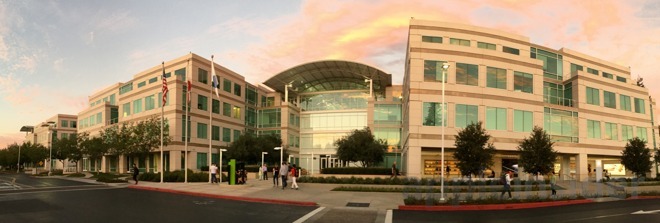
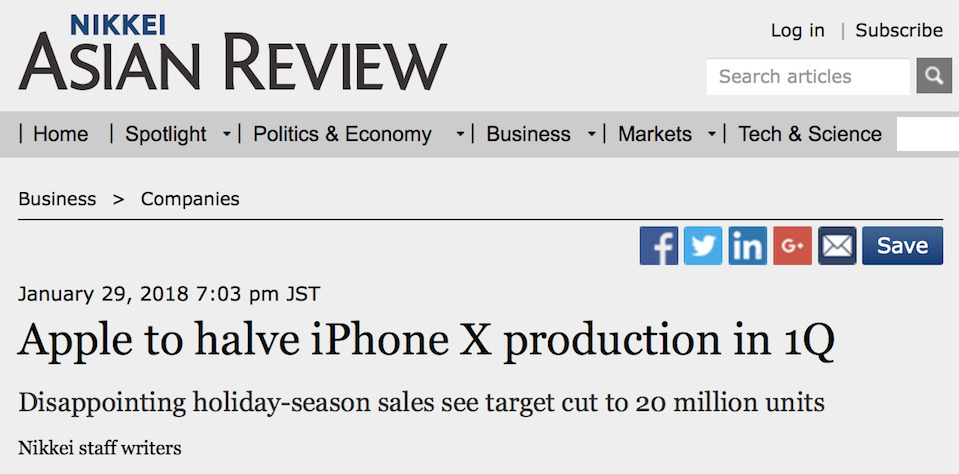

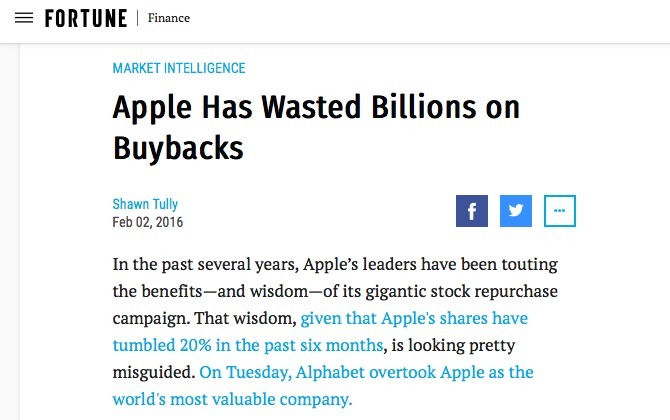
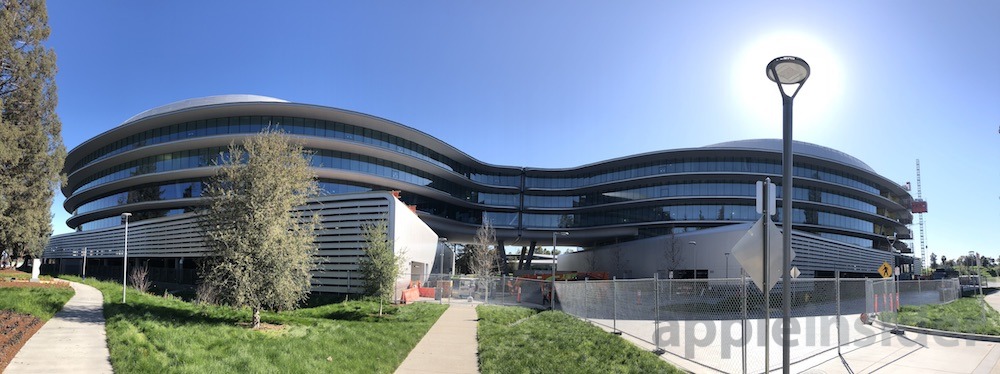
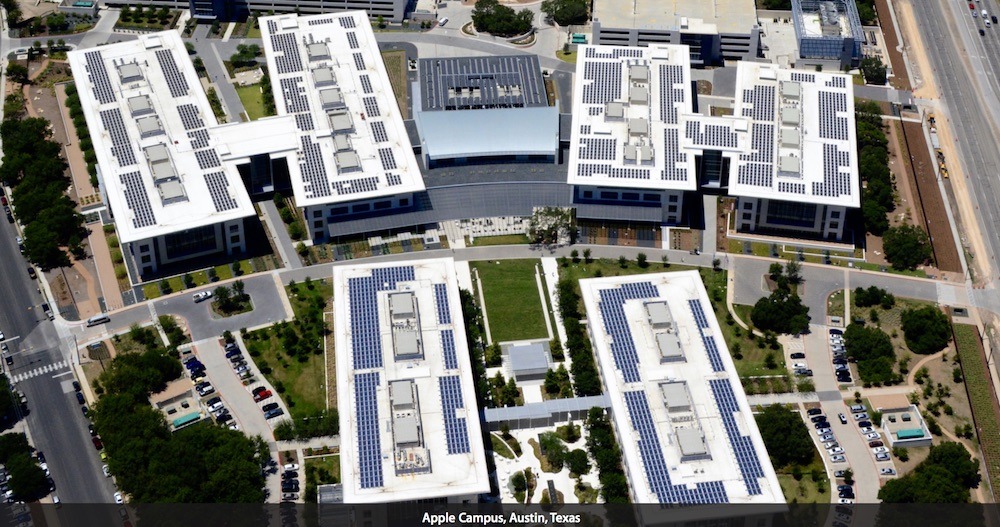
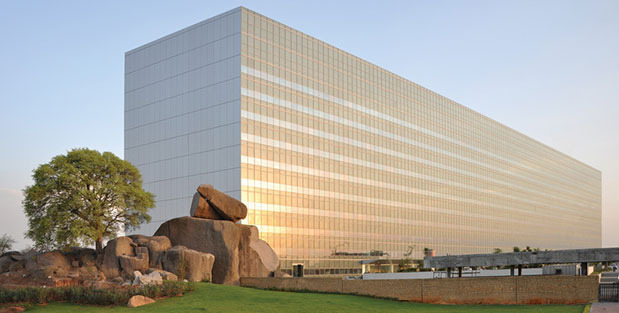











 Malcolm Owen
Malcolm Owen
 William Gallagher
William Gallagher
 Mike Wuerthele
Mike Wuerthele
 Christine McKee
Christine McKee

 Andrew Orr
Andrew Orr
 Sponsored Content
Sponsored Content
